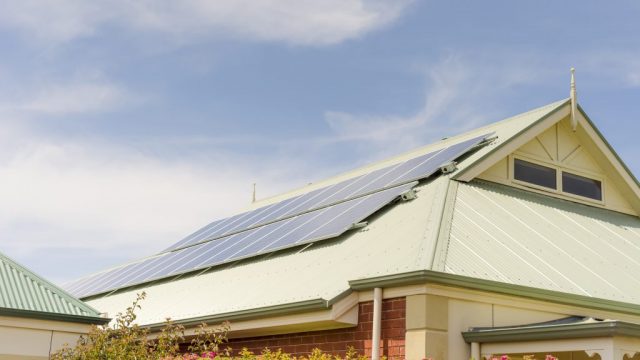$12.5 million boost to virtual power plants
Nearly $12.5 million in funding for two projects will aim to improve the way that rooftop solar and other distributed energy resources (DER) are integrated into the electricity system.

Energy tech company Greensync will receive $10 million to support the national rollout of its $32 million software platform known as Decentralised Energy Exchange (deX) which can register and control DER assets.
The company developed deX to allow electricity networks to better coordinate the uptake of DER in the electricity grid, while helping consumers get more value from assets such as solar, batteries and electric vehicles.
deX aims to manage DER such as solar PV, home batteries and smart appliances, which are rapidly growing in popularity and present challenges for the existing electricity network and market.
With predictions that as much as 45 per cent of electricity will be generated behind the meter within two decades, the race is on to accommodate energy flowing in two directions in a grid designed last century for one way traffic from large centralised power stations.
Through deX, GreenSync aims to enable new marketplaces for energy services to evolve, where behind the meter assets can bid into the market to be used for a range of grid services, such as frequency management, provision of energy for the wholesale market and reducing network constraints.
The open access platform will allow thousands of individual energy assets to be registered, visible to the grid and potentially harnessed to operate as a virtual power plant. This will grow the hosting capacity of electricity networks, allowing more solar and distributed energy resources to be connected.
The concept for Greensync’s deX platform was created through a collaboration of utilities and technology companies at an ARENA A-Lab event in 2016.
At the time, ARENA provided an initial $450,000 to Greensync to develop a pilot prototype, which was tested in the ACT and Victoria. The company has delivered a production release of the software, which is underpinning a virtual power plant trial by Simply Energy, which also received funding from ARENA.
The new funding will allow Greensync to scale up deX to be rolled out nationally.
GreenSync CEO Phil Blythe welcomed ARENA’s funding.
“As Australia is leading the charge with this technology globally, GreenSync sees a significant export opportunity for this and other innovative energy technologies in the deX ecosystem to meet the challenge of powering our grids by 100% renewables,” Mr Blythe said.
ARENA CEO Darren Miller said this was an example of homegrown innovation stemming from collaboration between government and energy companies.
“The deX platform is an exciting project for ARENA in that this project was initially developed at an A-Lab session in consultation with energy companies, was piloted and is now in the final stages of being rolled out as a commercial product that could change the way energy is bought and sold in the future.” he said.
Meanwhile, ARENA has also announced that the Australian Energy Market Operator (AEMO) will receive $2.46 million to demonstrate the capability of virtual power plants to deliver energy and perform frequency control ancillary services (FCAS).

AEMO will invite existing VPPs around Australia to participate in the trial, which is expected to run for between 12 and 18 months.
The injection of ARENA funding will allow the market operator to accelerate upgrades to its systems and processes to allow VPPs to be integrated smoothly into the network, before they reach commercial scale.
While VPPs trials underway are small scale at between 5 and 10 MW, AEMO forecast that there could be up to 700 MW in capacity within three years.
AEMO Managing Director and CEO Audrey Zibelman said Australia’s energy landscape is transforming and the demonstration will advance the integration of DER into the grid.
“Our focus is on the operation of the bi-directional system to increase system security and consumer value for both VPP participants and the power system as a whole,” she said.
Darren Miller said both projects are a step towards increasing the participation of DER and VPPs in the National Electricity Market.
“As we transition to a more decentralised energy system, VPPs have an important role to play in harnessing the collective potential of consumer owned energy assets like rooftop solar, batteries, smart appliances and electric vehicle charging,” Darren Miller said.
He believes that VPPs could improve the reliability of the network and deliver benefits to consumers by growing market competition.
LIKE THIS STORY? SIGN UP TO OUR NEWSLETTER

ARENA